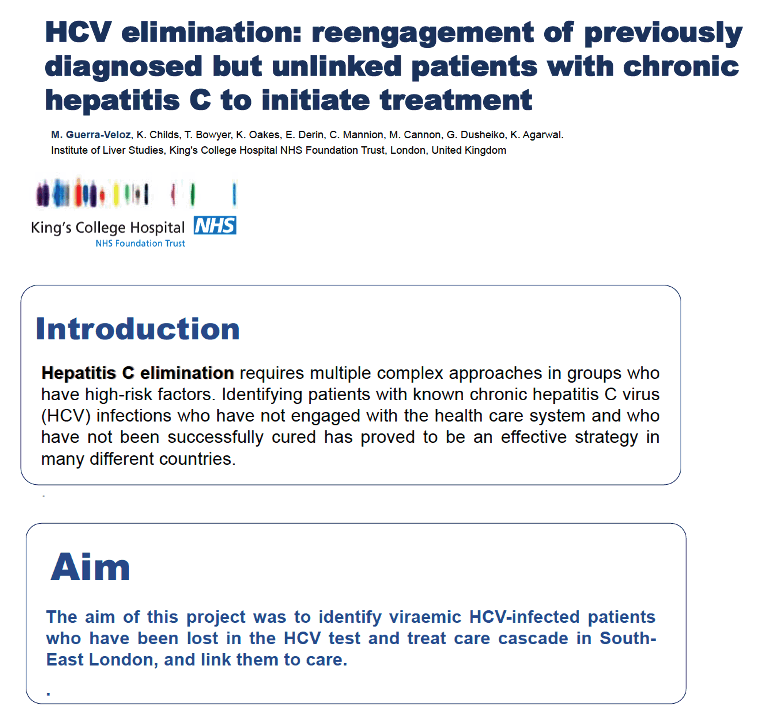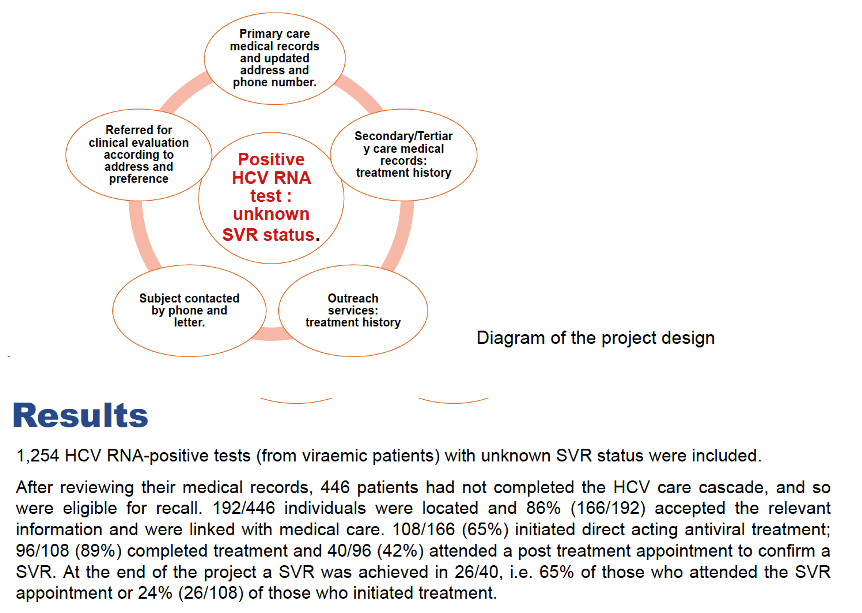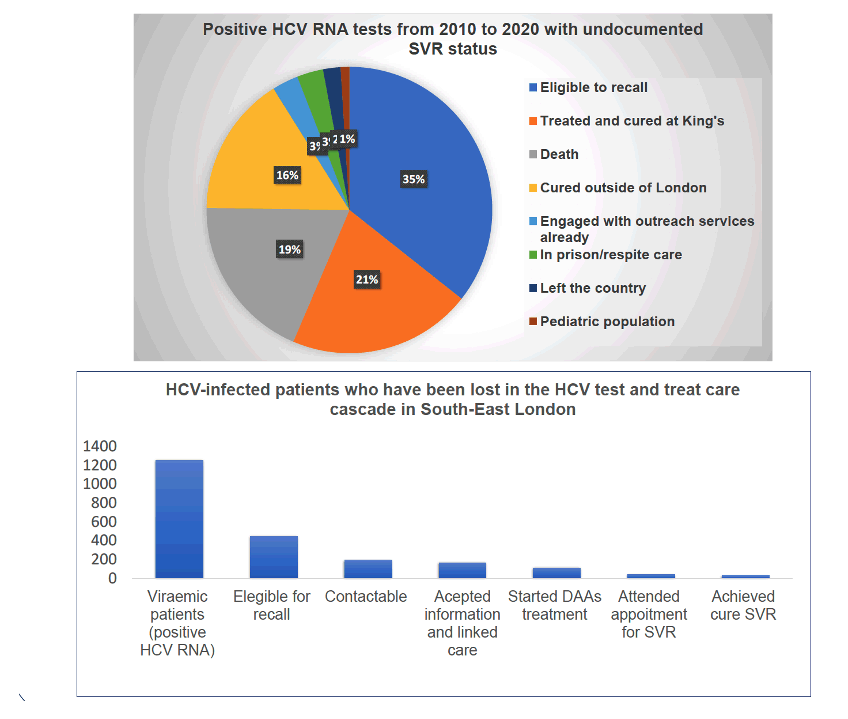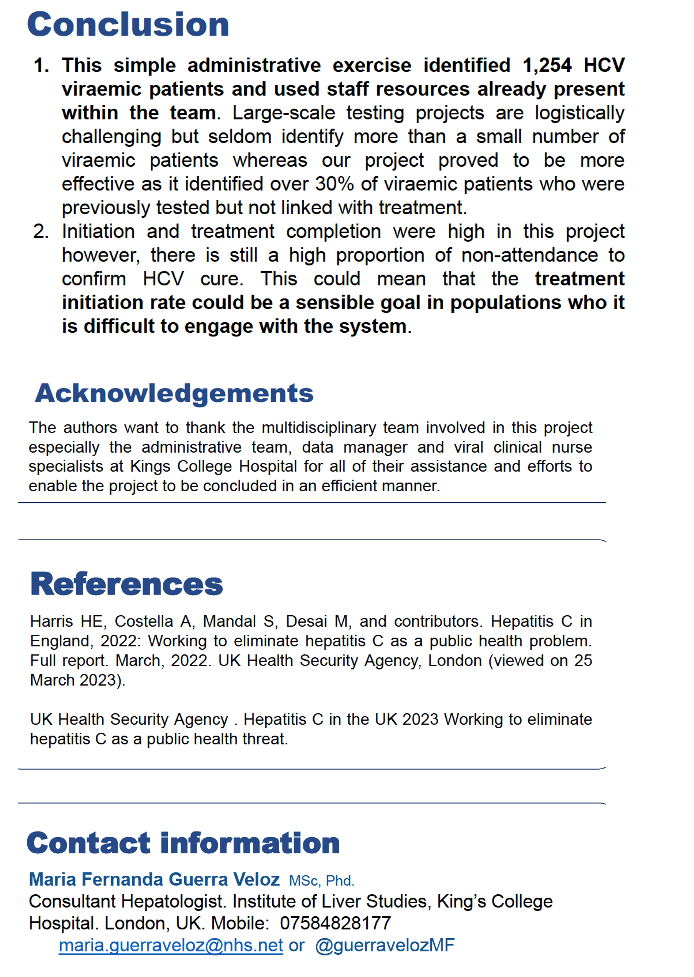 |
 |
 |
| |
Simple Record Review Finds 37% With HCV Who Fell Between Care Cascade Cracks
|
| |
| |
EASL Congress 2023, June 21-24, Vienna
Mark Mascolini
Straightforward record review and phone + mail follow-up identified more than one third of people with detectable HCV in blood who had not completed the HCV care cascade and whose sustained virologic response (SVR) to direct-acting antivirals (DAAs) could not be verified [1]. Among those people in this South-East London cohort who had not completed the HCV cascade and could be located, 86% got linked to medical care, and two thirds of the linked group began DAAs. Researchers from King's College Hospital proposed that this "simple administrative exercise" could be more effective in finding people with HCV viremia (detectable HCV in blood) than big and costly testing projects.
The King's College team noted that HCV elimination depends on tracking down people with active HCV infection, linking them to care, starting effective DAA therapy, and confirming that the DAAs produce an SVR. They aimed to identify HCV-viremic people in South-East London whose SVR status could not be confirmed because they fell through the cracks of this HCV care cascade.
The researchers scrutinized all positive HCV RNA tests from 2010 to 2020 and determined which people positive for HCV did not have a documented SVR either in the National Hepatitis C registry or in their local London hospital's viral hepatitis lab. People with an unconfirmed SVR got called by phone at least 5 times on different days. People who did not answer or respond to voicemails received a mailed appointment reminder.
Health workers referred responders to a one-stop HCV clinic at King's College Hospital, to their local hepatitis team, or to their local outreach service-whichever they preferred. People who completed DAA therapy had an SVR-confirming visit scheduled 12 weeks after they finished treatment.
The analysis involved 1254 HCV-positive tests in people with no record of SVR. Medical record review showed that 466 of these 1254 (37%) had not completed the HCV care cascade and so became eligible for follow-up in this protocol. Among those 466 people, health workers located 192 (86%), of whom 166 (36% of 466) got linked to HCV care. Two thirds of those 166 linked individuals (108 or 65%) started DAA therapy, 96 of 108 (89%) completed treatment, and 40 of 96 (42%) kept the appointment to determine SVR. Twenty-six of those 40 (65%) who kept the SVR appointment, 24% of the 108 who started treatment, 13.5% of the 192 located, and 2% of the 1254 who had not completed the HCV care cascade attained SVR.
The King's College team emphasized that "this simple administrative exercise" in record review and follow-up relied on workers already on staff. Among HCV-viremic people with initially unknown SVR status, this approach yielded good rates of linkage to care and starting DAA therapy. In contrast, they argued, "large-scale testing projects are logistically challenging but seldom identify more than a small number of viremic patients."
The researchers underlined the disappointing percentage of treated people who came back for SVR testing but proposed that DAA starting rate is a "sensible goal" in people poorly engaged with the medical system.
Reference
1. Guerra-Veloz M, Childs K, Bowyer T, et al. HCV elimination: reengagement of previously diagnosed but unlinked patients with chronic hepatitis C to initiate treatment. EASL Congress 2023, June 21-24, Vienna. Abstract THU-172.





|
| |
|
 |
 |
|
|